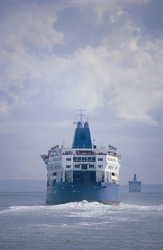Building the framework for safer sea transport
The 'Design, operation and regulation for safety' (Safedor) project worked to meet the needs of Europe’s maritime industry as related to innovative solutions for cleaner, safer and better quality transport. Undertaking to set the foundation for Europe to maintain world leadership on knowledge-intensive and safety-critical ships, services, products, equipment and related software, project partners looked to modernise the maritime regulatory system by offering systematic innovation in ship design and operation. Safedor aimed to provide additional design freedom for ships and systems as well as an approval process for introducing safety as an objective — beyond that of standard performance requirements such as speed, capacity and endurance. The project also worked to propose a modernised regulatory framework for facilitating risk analysis as an added element of the approval process. This sets the basis for the approval of novel ships beyond the current regulatory constraints. Team members addressed the critical prerequisites of fast and accurate first-principles tools to achieve systematic integration of risk analysis in the design process. Risk-based design requires the targeting of risk prevention and/or reduction as a design objective. In addition, researchers considered the importance of knowledge regarding the effect of design changes and measures for cost-effective safety enhancement. Several engineering tools for predicting the safety performance of a vessel in accidental and extreme conditions were newly developed or refined. Benchmark studies were conducted to validate software tools for the assessment of intact and damage stability. Design teams also developed innovative ship concepts that were advanced to preliminary design stage. Annual public conferences attracted large participant numbers, and annual public reports and presentations were disseminated to main stakeholders for maximum impact. A handbook on risk-based ship design was published and used as complementary material for students and experienced engineers at training courses. Project outcomes demonstrate the potential of risk-based frameworks for safety assessment techniques, integrated design environments and optimisation of ship operation processes. They also integrate operational, technological, environmental and human factors in issues of sea safety for the entire life-cycle of a vessel. Shipowners, shipyards and marine equipment manufacturers stand to benefit from Safedor achievements ğ— as do passengers, crew and even the environment.







